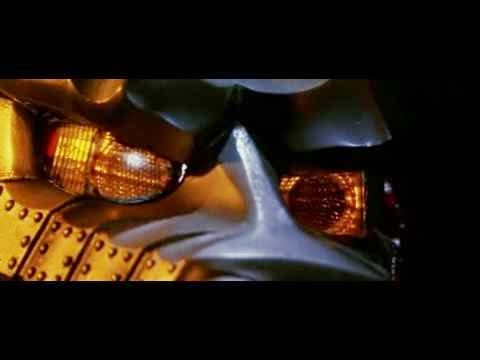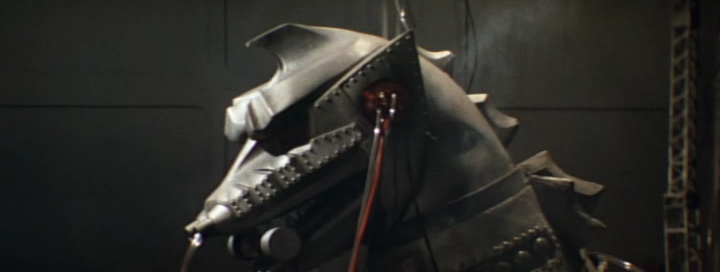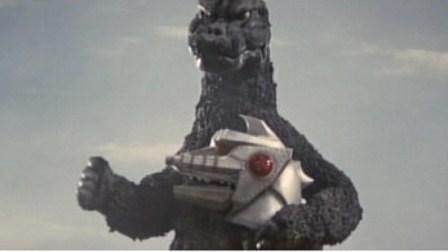- Home
- Features
- Movies/Media
- Collectibles
- Comics/Books
-
Databases
-
Figure Database
>
-
X-Plus Toho/Daiei/Other
>
- X-Plus 30 cm Godzilla/Toho Part One
- X-Plus 30 cm Godzilla/Toho Part Two
- X-Plus Large Monster Series Godzilla/Toho Part One
- X-Plus Large Monster Series Godzilla/Toho Part Two
- X-Plus Godzilla/Toho Pre-2007
- X-Plus Godzilla/Toho Gigantic Series
- X-Plus Daiei/Pacific Rim/Other
- X-Plus Daiei/Other Pre-2009
- X-Plus Toho/Daiei DefoReal/More Part One
- X-Plus Toho/Daiei DefoReal/More Part Two
- X-Plus Godzilla/Toho Other Figure Lines
- X-Plus Classic Creatures & More
- Star Ace/X-Plus Classic Creatures & More
-
X-Plus Ultraman
>
- X-Plus Ultraman Pre-2012 Part One
- X-Plus Ultraman Pre-2012 Part Two
- X-Plus Ultraman 2012 - 2013
- X-Plus Ultraman 2014 - 2015
- X-Plus Ultraman 2016 - 2017
- X-Plus Ultraman 2018 - 2019
- X-Plus Ultraman 2020 - 2021
- X-Plus Ultraman 2022 - 2023
- X-Plus Ultraman Gigantics/DefoReals
- X-Plus Ultraman RMC
- X-Plus Ultraman RMC Plus
- X-Plus Ultraman Other Figure Lines
- X-Plus Tokusatsu
- Bandai/Tamashii >
- Banpresto
- NECA >
- Medicom Toys >
- Kaiyodo/Revoltech
- Diamond Select Toys
- Funko/Jakks/Others
- Playmates Toys
- Art Spirits
- Mezco Toyz
-
X-Plus Toho/Daiei/Other
>
- Movie Database >
- Comic/Book Database >
-
Figure Database
>
- Marketplace
- Kaiju Addicts
|
Terror of Mechagodzilla (released in Japan as Counterattack of Mechagodzilla (メカゴジラの逆襲 Mekagojira no Gyakushū)) is a 1975 Japanese science fiction kaiju film produced by Toho. Directed by Ishirō Honda and featuring special effects by Teruyoshi Nakano, the film starred Tomoko Ai, Gorō Mutsumi, and Akihiko Hirata. This film was the 15th and final film in the original series of Godzilla films, before the series reboot in 1984. A direct sequel to the previous year's Godzilla vs. Mechagodzilla, this film was the least successful commercially of the entire Godzilla franchise. The movie takes place between Godzilla vs. Mechagodzilla and Destroy All Monsters. This was the last Godzilla film directed by Ishirō Honda. In the United States, it received a very limited theatrical release in the summer of 1978 by Bob Conn Enterprises as The Terror of Godzilla.  Plot Continuing after the end of the final film, Interpol agents, led by Inspector Kusaka, search for the wreck of Mechagodzilla at the bottom of the Okinawan Sea. Using the submarine, Akatsuki, they hope to gather information on the robot's builders, the alien simians. The Akatsuki is suddenly attacked by a giant aquatic dinosaur called Titanosaurus, and the crew vanishes. Interpol starts an investigation into the incident. With the help of marine biologist Akira Ichinose, they trace the Titanosaurus to a reclusive, mad scientist named Shinzô Mafune, who wants to destroy all mankind. While Ichinose is visiting his old home in the seaside forest of Manazuru, they meet Mafune's lone daughter, Katsura. She tells them that not only is her father dead, but she burned all of the notes about the giant dinosaur (at her father's request). Unknownst to them, Mafune is still alive and well. He is visited by his friend Tsuda, who is an aide to the simian alien leader Mugal. He is leading the project to quickly rebuild Mechagodzilla. Mugal offers their services to Mafune, so that his Titanosaurus and their Mechagodzilla 2 will be the ultimate weapons. They hope to wipe out mankind and rebuild the world for themselves. But things are complicated for both factions when Ichinose falls in love with Katsura and unwittingly gives her Interpol's information against Titanosaurus, the new Mechagodzilla, and the aliens. It's also discovered that Katsura is actually a cyborg, due to undergoing surgery and Mugal still has uses for her. Meanwhile, Mafune is desperate to unleash Titanosaurus without the aliens' permission, so he releases it on Yokosuka one night. By then, Interpol discovers that supersonic waves are the Titanosaurus' weakness. They had a supersonic wave oscillator ready, but Katsura sabotaged the machine before they could use it. Fortunately, Godzilla arrives to fight off Titanosaurus. Later, when Ichinose visits Katsura, he is captured by the aliens. Tied up, Ichinose can only watch as Mafune and the aliens unleash Mechagodzilla and Titanosaurus on Yokosuka, while Interpol struggles to repair their sonic wave machine and the Japanese armed forces struggle to keep the two monsters at bay. Katsura, while being controlled by Mugal, ignores Ichinose and controls both the dinosaur and the robot as they destroy the city. Godzilla comes to the rescue, though he is outmatched by the two titans. While Interpol distracts Titanosaurus with the supersonic wave oscillator, Godzilla is able to focus on attacking Mechagodzilla. Interpol agents infiltrate the aliens' hideout, rescue Ichinose, and kill Mafune and many of the aliens. The remaining aliens attempt to escape in their ship, but Godzilla shoots them down. Katsura, while being embraced by Ichinose, shoots herself to destroy Mechagodzilla. Godzilla, with the help of the oscillator, defeats Titanosaurus, and heads back to sea. Cast
Production The original screenplay that Yukiko Takayama created after winning Toho's story contest for the next establishment in the Godzilla series, which was picked by assistant producer Kenji Tokoro and was submitted for approval on July 1, 1974, less than four months after Godzilla vs. Mechagodzilla (1974) was released. The original concept is similar to the finished version of Terror of Mechagodzilla, with many of the changes being budgetary in nature. The most obvious alteration is the removal of the two monsters called the Titans, which merged to create Titanosaurus in the first draft. It was an interesting concept, although something that was also under explained considering the magnitude of such an occurrence of the creatures merging. Another noticeable change to the script is that of the final battle, which doesn't move to the countryside but instead would have reduced Tokyo to rubble during the ensuing conflict between the three monsters. After her initial draft, Takayama submitted a revised version on October 14, 1974. This went through a third revision on December 4, and then yet another on December 28 of that same year before it was met with approval and filming began. English Versions The film was given a North American theatrical release in March 1978 by Bob Conn Enterprises under the title The Terror of Godzilla. This version runs 78 minutes, five minutes shorter than the Japanese print. Just as Cinema Shares had done with the previous three Godzilla movies, Bob Conn Enterprises chose to utilize the Toho-produced English dub instead of hiring American voice actors to re-dub the film. The Terror of Godzilla was heavily edited to obtain a "G" rating from the MPAA. Several scenes with violent content were entirely removed, disrupting the flow of the narrative. Rumor has it that an unedited print, still titled The Terror of Godzilla, was shown in theaters as well. Henry Saperstein, who sold the theatrical rights to Bob Conn Enterprises, also released the film to television in late 1978, this time under the title Terror of Mechagodzilla. This version runs 89 minutes, which is actually six minutes longer than the Japanese version. It included a prologue about the history of Godzilla, with footage from Monster Zero and Godzilla's Revenge (itself using stock footage from Godzilla vs. the Sea Monster and Son of Godzilla). The rest of this version was uncut with the exception of the shot of Katsura's breasts. In the mid-1980s, the US TV version, Terror of Mechagodzilla, was replaced by the theatrical edit, The Terror of Godzilla, on television and home video. For some reason, the title was also changed to Terror of Mechagodzilla. The 1994 Paramount release of Terror of Mechagodzilla listed a running time of 89 minutes on the slipcase, implying that this release would be the longer version first shown on American TV. The actual video cassette featured the edited theatrical version. In a 1995 interview with G-Fan, Henry Saperstein was surprised to hear about this mistake. In the mid-2000s, the television version showed up again on Monsters HD, and in 2007, it made its home video debut as the US version on the Classic Media DVD. Although the added prologue was framed for fullscreen television, it was cropped and shown in widescreen on the disc. The rest of the movie featured the audio from Saperstein's television version synced to video from the Japanese version. The first article about the movie's storyline was published in a 1977 issue of "Japanese Giants" (published by Brad Boyle) and was written by Richard H. Campbell, creator of The Godzilla Fan News Letter. Titles Counterattack of Mechagodzilla - Japanese title. Terror of Mechagodzilla - Toho's official English title. Henry Saperstein's TV version was also titled this. All subsequent versions of the film released in the U.S. have been given this title as well, including The Terror of Godzilla version. The fully uncut UK video also featured this title. The Terror of Godzilla - U.S. theatrical release title. Monsters from an Unknown Planet - UK theatrical release title. Box Office In Japan, the film sold 970,000 tickets. It would be the least-attended Godzilla film in Japan and also one of only two Godzilla films to sell less than one million tickets. As a result, the series was put on hold. Toho had no intention of permanently ending the Godzilla series. Throughout the remainder of the decade, several new stories were submitted by writers and producers. None of these films, however, were made. It wasn't until 1984 and Godzilla's 30th anniversary that Toho would start production on a new Godzilla movie. Despite the movie's poor box office and critical reception at the time of its original release, it has become a favorite among fans due to its dark nature, brief but entertaining kaiju battles, and the return of series veterans Ishiro Honda and Akira Ifukube.  DVD Release Second Classic Media Release Released: November 20, 2007 in the Godzilla Collection box set. Singular release April 29, 2008. Aspect Ratio: 2.55:1 Sound: English, Japanese Supplements: Women of Godzilla Featurette, Audio commentary, Theatrical trailer (later pressings only) Region 1 First Classic Media Release Released: September 17, 2002 Sound: English Subtitles: None Supplements: Trailer for 2002 Nintendo Gamecube video game, Godzilla: Destroy All Monsters Melee Also released as part of the Ultimate Godzilla DVD Collection, which was simultaneously released on September 17, 2002 Region 1 Simitar Entertainment Released: May 6, 1998 Video: Fullscreen Sound: English mono, English 5.1 (Edited The Terror of Godzilla version) Supplements: Godzilla trailers; Godzilla video art gallery; Film facts; Trivia game; DVD-ROM (Screensavers, printable art gallery, web access) Region 1
0 Comments
Leave a Reply. |
Release Dates
November 2023
|
|
© 2011-2024 Kaiju Battle. All Rights Reserved.
|
Visit Our Social Media Sites
|
Proudly powered by Weebly
|
- Home
- Features
- Movies/Media
- Collectibles
- Comics/Books
-
Databases
-
Figure Database
>
-
X-Plus Toho/Daiei/Other
>
- X-Plus 30 cm Godzilla/Toho Part One
- X-Plus 30 cm Godzilla/Toho Part Two
- X-Plus Large Monster Series Godzilla/Toho Part One
- X-Plus Large Monster Series Godzilla/Toho Part Two
- X-Plus Godzilla/Toho Pre-2007
- X-Plus Godzilla/Toho Gigantic Series
- X-Plus Daiei/Pacific Rim/Other
- X-Plus Daiei/Other Pre-2009
- X-Plus Toho/Daiei DefoReal/More Part One
- X-Plus Toho/Daiei DefoReal/More Part Two
- X-Plus Godzilla/Toho Other Figure Lines
- X-Plus Classic Creatures & More
- Star Ace/X-Plus Classic Creatures & More
-
X-Plus Ultraman
>
- X-Plus Ultraman Pre-2012 Part One
- X-Plus Ultraman Pre-2012 Part Two
- X-Plus Ultraman 2012 - 2013
- X-Plus Ultraman 2014 - 2015
- X-Plus Ultraman 2016 - 2017
- X-Plus Ultraman 2018 - 2019
- X-Plus Ultraman 2020 - 2021
- X-Plus Ultraman 2022 - 2023
- X-Plus Ultraman Gigantics/DefoReals
- X-Plus Ultraman RMC
- X-Plus Ultraman RMC Plus
- X-Plus Ultraman Other Figure Lines
- X-Plus Tokusatsu
- Bandai/Tamashii >
- Banpresto
- NECA >
- Medicom Toys >
- Kaiyodo/Revoltech
- Diamond Select Toys
- Funko/Jakks/Others
- Playmates Toys
- Art Spirits
- Mezco Toyz
-
X-Plus Toho/Daiei/Other
>
- Movie Database >
- Comic/Book Database >
-
Figure Database
>
- Marketplace
- Kaiju Addicts








 RSS Feed
RSS Feed